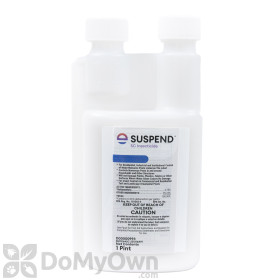What Am I Doing Wrong in my DIY Flea Treatment?

We are constantly receiving calls from frustrated customers who have applied several IGRs (insect growth regulators) and residual treatments for fleas, and yet continue to see flea activity. If you are dealing with a flea infestation that doesn't seem to quit, read on for some possible reasons and corresponding steps you can take.
What might be going on, and what you can do about it:
- There are several "hot spots" you have not yet treated. It is likely that you have already applied an IGR and a residual treatment to areas where you have noticed adult fleas. However, what you have overlooked in this case are the flea larvae, living in the carpet and other fabrics in the house where pets spend time lounging.
What you should do: You must treat every place the dog and cat like to lay around or you will continue to get fleas when the dropped flea larvae hatch. Such places include window ledges, in closets and under beds, and the backs of chairs.
- You are dealing with flea pupae which are immune to your sprays. The reasons they are immune is that they are protected from the chemical by a strong, silk cocoon. These "pre-adult" fleas actually require a physical stimulus to cause them to emerge, and without it, they may continue to hang around inside their cozy cocoon for up to 6 months before hatching, or until they are stimulated to emerge by human stomping or pet activity.
What you should do: VACUUM, VACUUM, VACUUM. Before your next residual treatment, you need to stimulate the flea pupae by vacuuming every square inch of the carpet and furniture. Remove all items from under the bed, closets, behind furniture, to expose all carpet and vacuum thoroughly. Apply the pesticide and IGR. Then, after the application, vacuum the area again, and continue to vacuum every square inch each day for at least two weeks. Each session of vacuuming will cause more flea pupae to emerge and either be sucked up by the vacuum or killed by the chemical. These pesticide products adhere to fabrics very well and will not be removed by the vacuuming. Have your pet deflead by a veterinarian.
- The Fleas are coming from an outside source. While this is the least likely reason for continued activity, it is still possible, especially if you have tried absolutely everything else and are still getting flea bites.
What you should do: Apply your IGR (Archer or Precor, but not Gentrol) outdoors, along with a labeled adulticide (Suspend SC, Demon WP). Have your pet deflead by a veterinarian.











